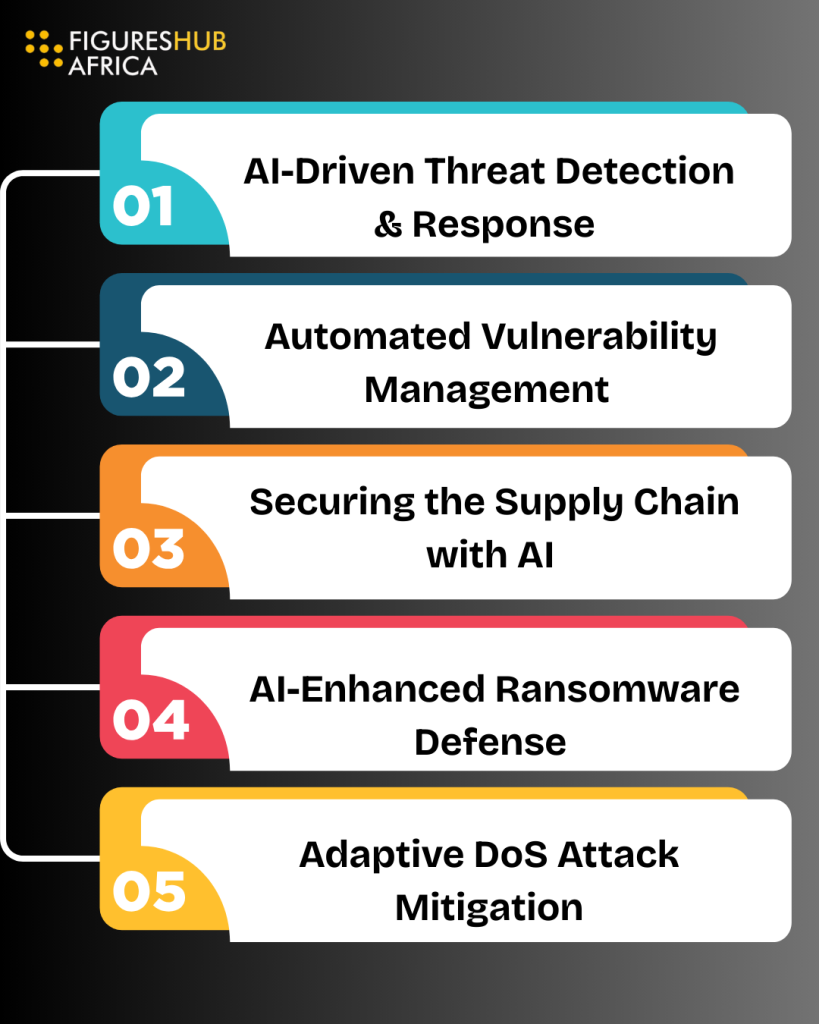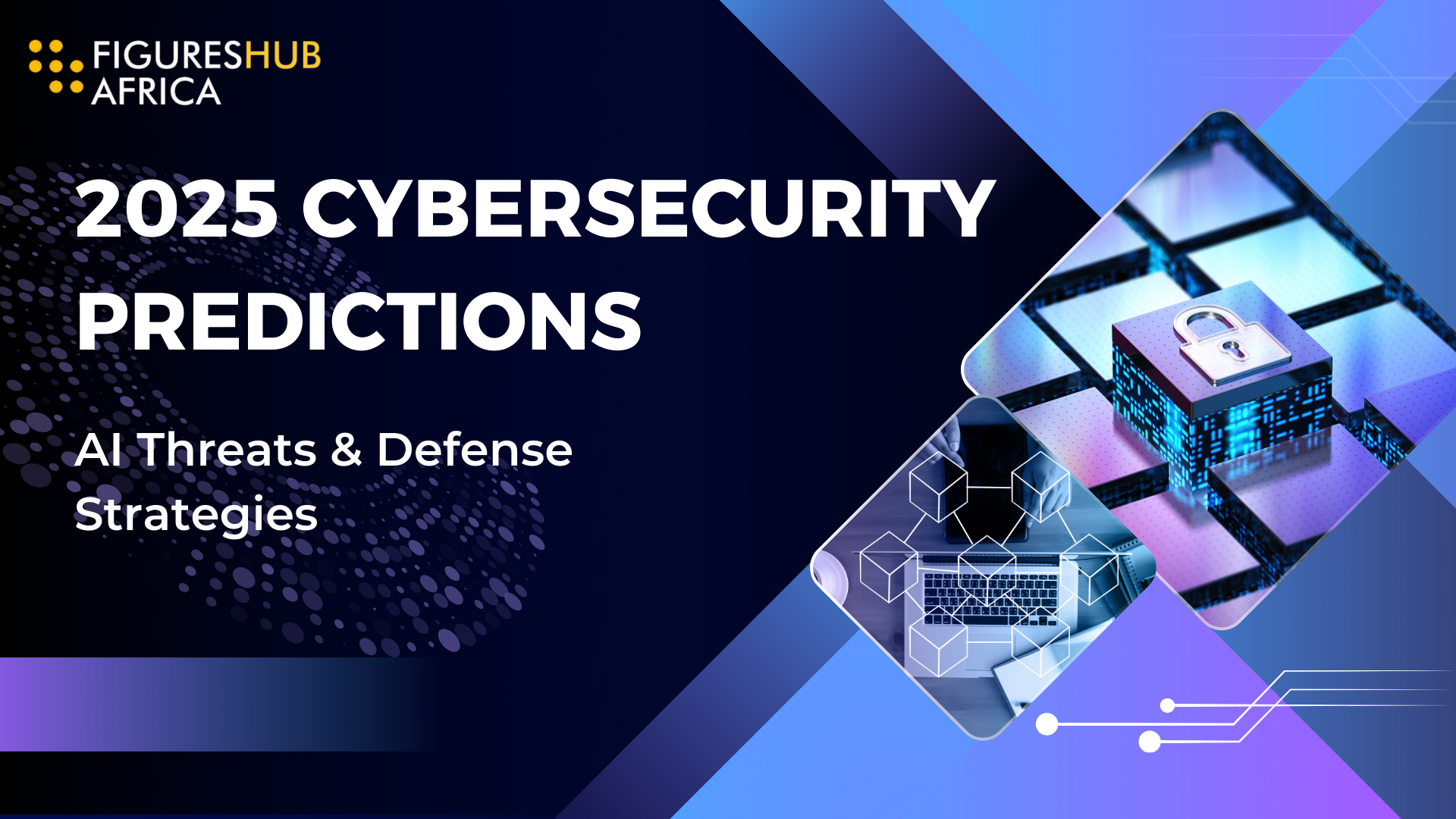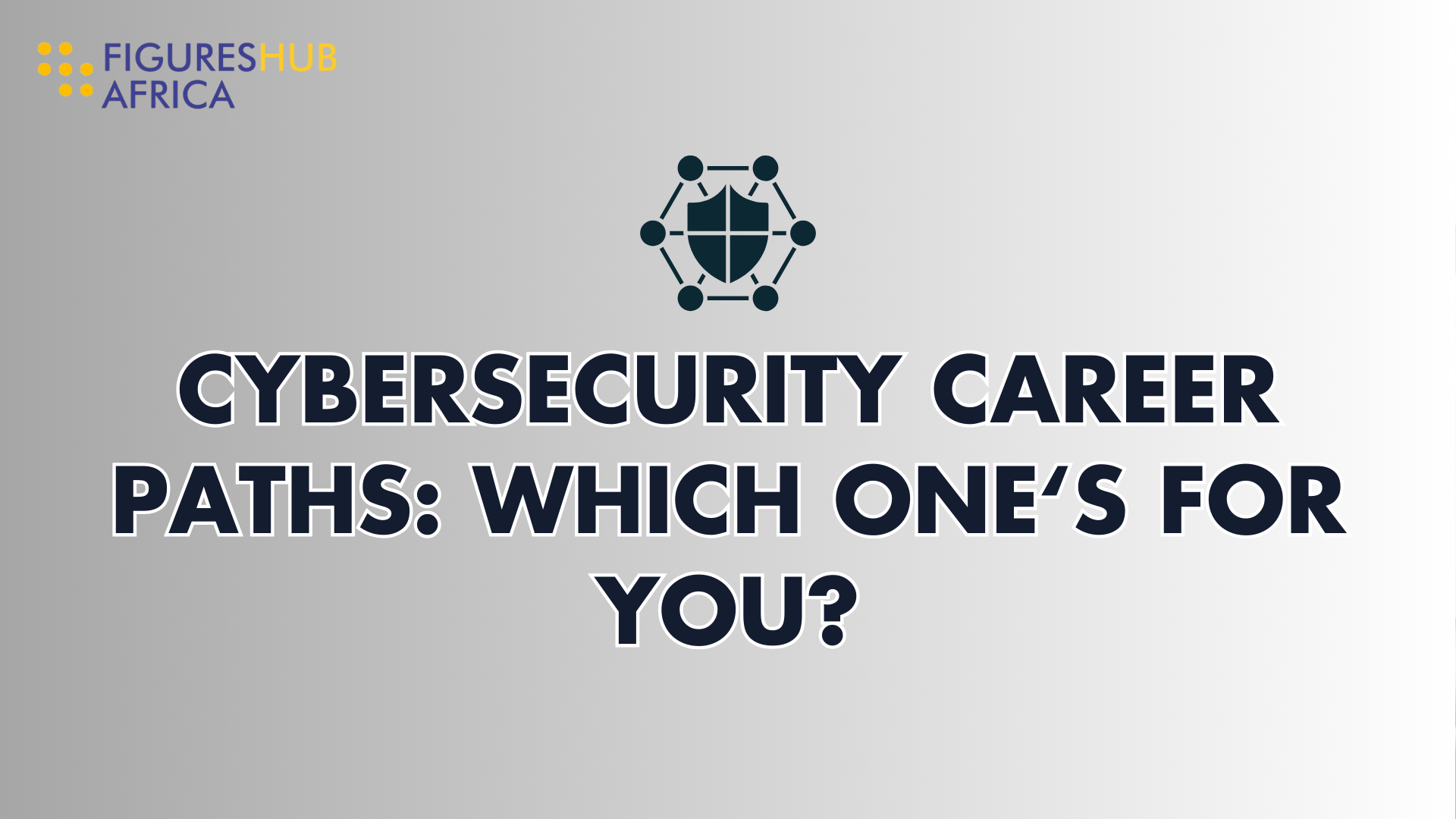Artificial intelligence (AI) is reshaping cybersecurity, serving as both a weapon for attackers and a critical defense tool. In 2025, cybercriminals will leverage AI to automate, scale, and refine their attacks, making phishing, ransomware, and cyber espionage more dangerous than ever. To stay ahead, organizations must adopt AI-driven cybersecurity strategies that counteract these emerging threats.
In this guide, we’ll see the top AI-powered threats of 2025 and the best defense strategies organizations need to implement to stay secure.
AI-Powered Cyber Threats in 2025
In 2025, AI will make cyber threats more sophisticated and harder to detect. Here are the top AI-powered risks organizations must prepare for.
AI-Driven Phishing & Deepfake Scams
AI enables hackers to create highly realistic phishing emails, texts, and deepfake videos. Attackers use social media data to personalize scams, making them harder to detect.
For example, a deepfake video of a CEO instructing employees to transfer funds to a fraudulent account.
Automated Vulnerability Exploitation
AI-driven tools can scan and exploit system vulnerabilities faster than ever. Cybercriminals use machine learning algorithms to automate attacks in real-time. For example, AI bots detecting unpatched software flaws and deploying malware before a fix is released.
AI-Enhanced Supply Chain Attacks
AI can analyze supply chains to pinpoint weak links, such as vendors with weak security protocols. For example, hackers compromise a small supplier’s system to gain access to a major corporation’s network.
Ransomware 2.0: Smarter & Faster Attacks
AI-enhanced ransomware adapts to different security environments, making it harder to stop. Attackers use automated negotiation bots to demand and adjust ransom amounts.
Example: Ransomware that alters its encryption methods based on the victim’s security defenses.
AI-Powered DoS (Denial-of-Service) Attacks
AI can optimize botnets to launch large-scale DoS attacks, overwhelming systems. Attackers use adaptive attack patterns to evade traditional security defenses.
Example: A botnet that dynamically shifts attack traffic to bypass security filters.
Insider Threats Amplified by AI
AI can help malicious insiders automate data leaks and cover their tracks. Example: AI tools scheduling data leaks at times when security monitoring is low.
AI-Driven Cyber Espionage & Warfare
Nation-states and Advanced Persistent Threats (APTs) use AI to conduct cyber espionage. Example: AI-powered malware that infiltrates government networks to steal classified data undetected.
Key Cybersecurity Challenges in 2025
Cyber threats are evolving rapidly in 2025, with AI-driven attacks, ransomware, and deepfakes posing new risks. Here are the biggest cybersecurity challenges organizations must prepare for.
The AI Arms Race: Hackers vs. Defenders
Cybersecurity is evolving into a battle of AI vs. AI, where attackers and defenders constantly upgrade their AI models.
Data Privacy & AI Exploitation
AI-driven data scraping and deep learning algorithms threaten privacy by harvesting user information from public and private sources.
Increasing Regulatory Pressure
Governments are tightening AI and cybersecurity regulations, requiring organizations to comply with GDPR, CCPA, and new AI governance policies.
AI-Powered Cyber Defense Strategies for 2025

Harman Kaur, VP of AI at Tanium:
“By 2025, AI in cybersecurity will evolve beyond chatbots to an agent-driven model. While chatbots provide value, agents mark a significant shift, enabling automated threat detection and response.”
As cyber threats evolve, AI-driven defense strategies are essential for 2025. Here are the top AI-powered tactics to detect, prevent, and counter cyberattacks effectively.
AI-Driven Threat Detection & Response
AI-based security tools analyze network traffic, system logs, and user behavior to detect cyber threats in real-time. Machine learning models flag unusual login patterns or phishing attempts.
Automated Vulnerability Management
AI-powered patch management systems proactively scan for security flaws and apply updates automatically. AI-driven tools that identify and fix vulnerabilities before attackers can exploit them.
Securing the Supply Chain with AI
AI can monitor third-party vendors and software updates, detecting anomalies that may indicate security risks. AI tools flagging unauthorized access attempts in vendor systems.
AI-Enhanced Ransomware Defense
AI security systems detect ransomware patterns in real-time and isolate affected systems before the attack spreads. AI-based endpoint protection blocking suspicious encryption activities.
Adaptive DoS Attack Mitigation
AI-driven firewalls and intrusion detection systems (IDS) can predict and mitigate DoS attacks dynamically. AI models recognizing and filtering out malicious traffic patterns before they cause downtime.
Preventing Insider Threats with AI
AI-powered behavioral analytics monitor employee actions to identify potential insider threats. AI detects unusual file transfers or unauthorized access to sensitive data.
AI-Driven Data Loss Prevention (DLP)
AI automatically classifies, tags, and encrypts sensitive data, preventing unauthorized access. AI blocking emails that contain confidential company data from being sent externally.
Autonomous AI Cyber Defense System
Future AI-driven security tools will evolve autonomously, adapting to new threats without human intervention. Self-learning AI that adjusts firewall settings in response to cyberattacks.
Conclusion
AI is reshaping cybersecurity, creating both new challenges and advanced defense solutions. As cybercriminals harness AI for more sophisticated attacks, businesses must respond with AI-driven security strategies. To stay secure in 2025 and beyond, organizations must:
✔ Invest in AI-powered threat detection.
✔ Implement Zero Trust security.
✔ Automate vulnerability management.
✔ Enhance supply chain security.
✔ Prepare for AI-driven cyber warfare.
Cybersecurity in 2025 isn’t just about technology—it’s about staying ahead in AI. Looking to sharpen your AI skills? Visit FiguresHub to start your journey today!



